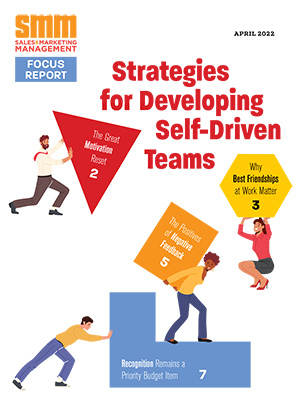Everyone is talking about how salespeople must learn how to deliver insights to their customers, because the Internet has changed how people buy. By the time a customer engages a salesperson, they’re 60 percent of the way through their buying cycle and have done most of their research online. They don’t need more information from a salesperson; what they need is insight into what the information means.
But what is insight? Why is it important? And how do you deliver it?
Why is insight important?
Without a salesperson’s insights, customers are forced to oversimplify their purchase because they’re constrained by both time and expertise. Customers will, for instance, strip out the unique value for each supplier because it’s too overwhelming to compare anything other than apples to apples. When products look the same, the only differentiator is price. Unfortunately, this self-service model produces a watered-down solution for the customer, and it erodes the seller’s margins.
What is insight?
When Insight Sellers deliver insights, they shock customers by breaking their thought patterns, and then they rescue customers by replacing the broken pattern with one that is new and improved. That’s the “aha experience.” And it’s also how a salesperson reframes customers’ buying visions when they’re already more than halfway through their buying cycle.
How do you find insight?
Salespeople find insight by trying to figure out what’s counterintuitive about their core sales message? Where’s the gap between what the customer believes today and what they need to believe to buy your product? An example could be that a salesman generally gears a sales message toward why customers should buy from him vs. the competition. Because it’s counterintuitive that his largest competitor is his customer deciding to do nothing – not another company – he loses out on a lot of business. The salesperson is pushing “why us” and the customer’s wondering “why change?” The Insight Seller will offer a way to fix the broken pattern by suggesting that the salesperson’s message first addresses why change, before why us.
How do you create insight?
You may discover that you find insight only 20 percent of the time, and the other 80 percent of the time you have to work at trying to create it. We suggest you try to create insight by simply increasing the contrast between hell if the customer remains with their current broken pattern, and heaven if they adopt your new and improved pattern. And then add customer knowledge to make this image crystal clear.
With this approach, you’re betting that the customer doesn’t have the insight to see this image at its maximum contrast and focus. This is generally a good bet because customers lack both the time and expertise to do this on their own. It's also a good bet because other salespeople are only able to paint a superficial picture of the problem because they lack the customer knowledge needed to complete the picture.
How do you deliver insight?
Instead of using a direct approach to challenge the customer, we suggest you tell a story. Because a story is about someone else, it is non-confrontational, so it avoids the potential for the customer to feel attacked, become defensive and then shut-down.
When the customer listens to your story, for instance, she begins to realize that she is no longer ankle-deep in problems, but that she is really drowning in the middle of the lake. That’s the time, not before, that the Insight Seller completes the circle of insight by offering to rescue the customer with the new and improved pattern.
Insight Sellers reframe their customers’ thinking so they can sell value and differentiate their product. They do this by using insights to break and then fix their customers’ thought patterns. To make sure that their sales bag is always full of insights, Insight Sellers are always looking for ways to find or create insights. Because stories make abstract facts and figures feel real, they make customers care. That’s why charity donation letters are able to pull two times the donations when the letter is about a real person versus facts and figures about many.
Start Insight Selling so that your salespeople are able to sell value and differentiate your product.
As CxO of Insight Demand, Michael Harris shows salespeople how to sell value and differentiate their product.


